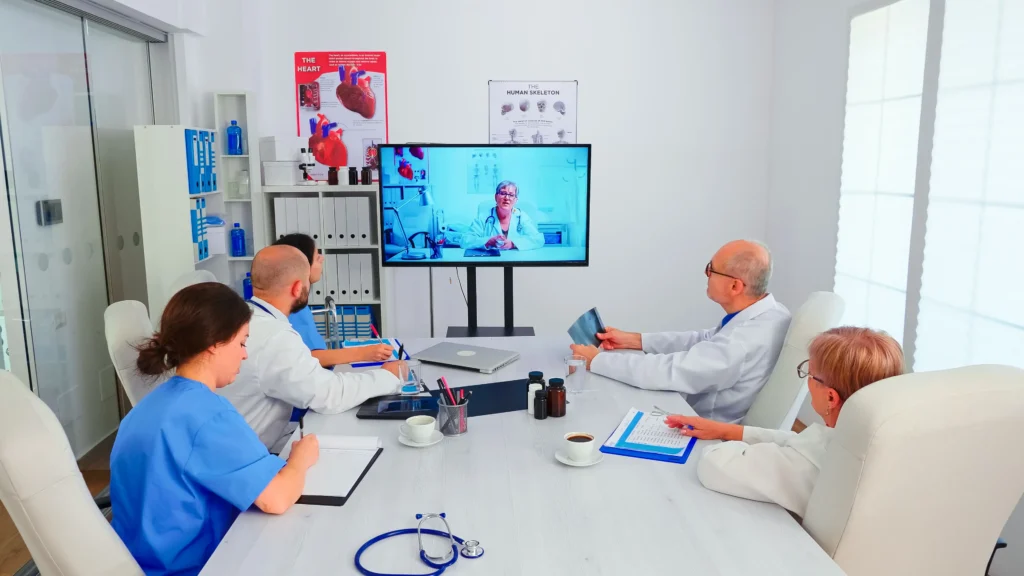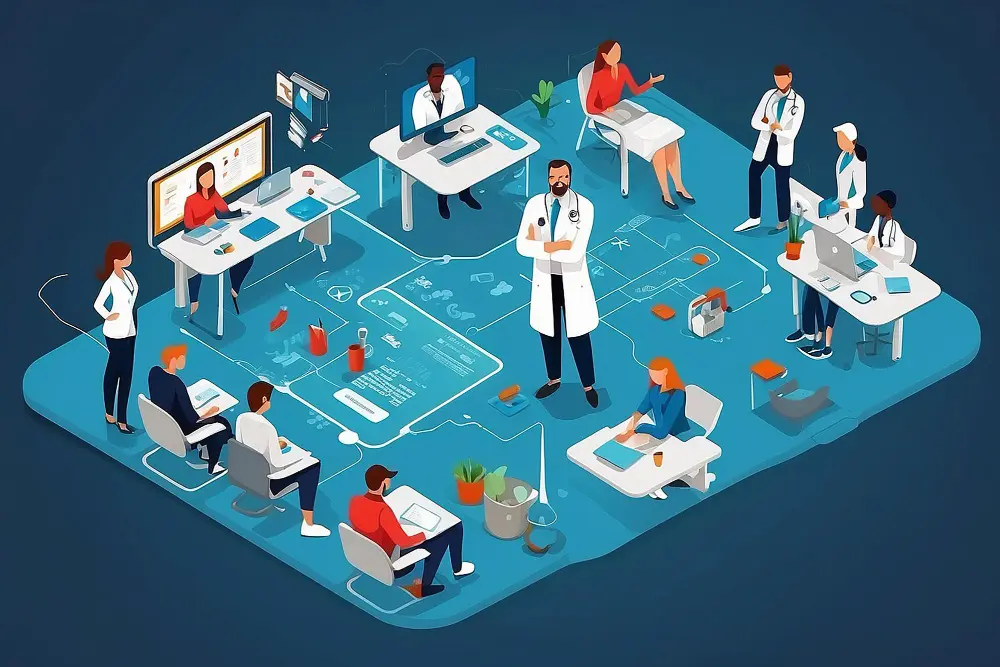The healthcare industry has witnessed a significant evolution with technology integration, revolutionizing how medical services are delivered and accessed. One of the most notable advancements in recent years is the emergence of telemedicine, which has reshaped the traditional doctor-patient interaction paradigm.
Understanding Telemedicine
Telemedicine refers to the provision of healthcare services remotely using telecommunications technology. It encompasses various services, including virtual consultations, remote monitoring, and tele-surgeries. While telemedicine offers unprecedented convenience and accessibility, it also presents challenges, such as ensuring patient privacy and navigating regulatory frameworks.
Integration of Technology in Locum Tenens Practice
In the locum tenens practice, technology has become an indispensable tool for connecting healthcare providers with needy patients. Telemedicine platforms facilitate virtual consultations, enabling locum tenens physicians to deliver patient care regardless of geographic barriers.

Additionally, remote monitoring devices and electronic health records (EHRs) streamline documentation and enhance care coordination.
Benefits of Technology in Locum Tenens
Integrating technology in locum tenens practice yields numerous benefits for providers and patients. By leveraging telemedicine solutions, locum tenens physicians can extend their reach to underserved communities, improving access to healthcare services. Furthermore, technology-driven workflows enhance efficiency, reduce administrative burdens, and lower operational costs.
Challenges and Limitations
Despite its transformative potential, adopting technology in locum tenens practice is challenging. Connectivity issues in rural areas may hinder the delivery of telemedicine services, while concerns about patient confidentiality and data security must be addressed to ensure compliance with regulations. Additionally, navigating the complex regulatory landscape surrounding telemedicine can pose obstacles for locum tenens providers.
Future Trends and Innovations
Looking ahead, the future of technology in locum tenens practice holds promise for further innovation and advancement.

Artificial intelligence (AI) is poised to play a significant role in telemedicine, facilitating more accurate diagnoses and personalized treatment plans. Wearable health technologies and virtual reality applications offer new patient engagement and remote care delivery avenues.
Best Practices for Telemedicine in Locum Tenens
To maximize the benefits of telemedicine in locum tenens practice, providers must prioritize effective communication, both with patients and within multidisciplinary care teams. Technical proficiency in telemedicine platforms and adherence to regulatory requirements are essential for remotely delivering high-quality care.
Case Studies
Several case studies demonstrate the successful implementation of telemedicine in locum tenens practice, highlighting best practices and lessons learned. These real-world examples underscore the transformative impact of technology on healthcare delivery and patient outcomes.
Training and Education

Continuous training and education are paramount for locum tenens providers to stay abreast of technological advancements and emerging best practices. Tech literacy programs can help bridge the digital divide and ensure that healthcare professionals are equipped with the skills to leverage technology in their practice effectively.
Ethical Considerations
Ethical considerations are paramount in delivering telemedicine services, particularly regarding patient consent, privacy, and quality of care. Locum tenens providers must uphold the highest ethical standards to safeguard patient trust and ensure positive healthcare outcomes.
Impact of COVID-19 Pandemic
The COVID-19 pandemic has accelerated the adoption of telemedicine in locum tenens practice as healthcare organizations seek alternative means of delivering care while minimizing exposure to the virus. This unprecedented global health crisis has underscored the importance of technology in ensuring continuity of care and adapting to rapidly evolving healthcare needs.
Global Perspectives

Telemedicine adoption varies across countries and is influenced by cultural, regulatory, and infrastructural factors. While some nations have embraced telemedicine to expand access to healthcare services, others face challenges related to infrastructure development and regulatory frameworks.
Conclusion
In conclusion, technology and telemedicine are reshaping the landscape of locum tenens practice, offering unprecedented opportunities to improve access to healthcare and enhance patient outcomes. By embracing innovation, leveraging telemedicine solutions, and addressing challenges proactively, locum tenens providers can play a pivotal role in advancing healthcare delivery in the digital age.
FAQs
What are the main benefits of telemedicine in locum tenens practice?
Telemedicine in locum tenens practice offers benefits such as improved access to healthcare, enhanced efficiency, and cost-effectiveness.
How can locum tenens providers ensure patient confidentiality in telemedicine?
Locum tenens providers can ensure patient confidentiality in telemedicine by implementing robust data security measures and adhering to strict privacy protocols.
What role does technology play in addressing healthcare disparities in rural areas through locum tenens practice?
Technology enables locum tenens providers to reach underserved rural populations through telemedicine, bridging geographic barriers and expanding access to healthcare services.
Are there any specific regulations governing telemedicine for locum tenens providers?
Telemedicine regulations vary by jurisdiction, but locum tenens providers must comply with legal requirements regarding licensure, patient consent, and medical practice standards.
How has the COVID-19 pandemic influenced the use of telemedicine in locum tenens practice?
The COVID-19 pandemic has accelerated the adoption of telemedicine in locum tenens practice as healthcare organizations seek alternative means of delivering care while minimizing exposure to the virus.




